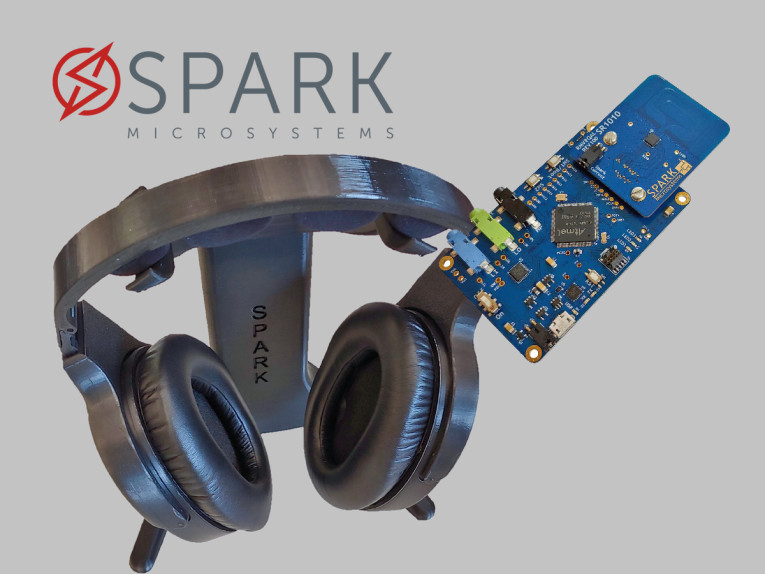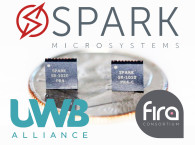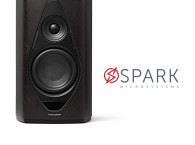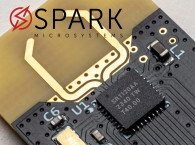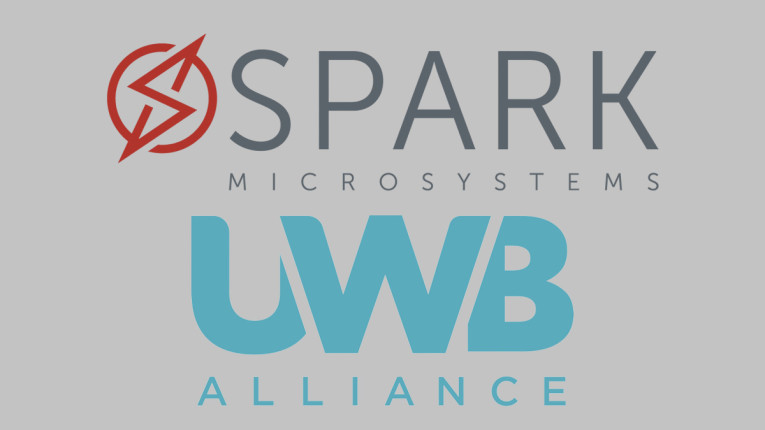
Since joining the UWB Alliance and the FiRa Consortium in September 2021, the company, based in Montreal, is leading the technology efforts to promote ultra-wideband (UWB) technology in some of the most important application areas for consumer electronics. Phase one of the new multi-step project with the UWB Alliance includes testing the interoperability and compatibility of a pair of UWB technologies operating in a single environment simultaneously with UWB transceivers from SPARK Microsystems and other industry players.
"Generating empirical data through scientific testing is critical for understanding how UWB devices can coexist with other devices," says Benjamin Rolfe, CTO, UWB Alliance. "The testing we are doing with SPARK Microsystems will enable the industry to progress forward on collaborative coexistence strategies that optimize spectrum sharing while minimizing interference. It will also provide standards-making bodies with factual documentation to aid in amending or modifying spectrum rules, allowing more UWB-enabled solutions to come to market."
Preliminary results of phase one with multiple UWB devices indicate generally good coexistence performance, with the tested devices showing no measurable performance impact from other interfering UWB devices. Testing of multiple devices in aggregation was also conducted. Phase two will expand the coexistence testing to include UWB with U-NII devices in 6GHz (802.11ax). The full results will become available shortly after the conclusion of the testing.
"SPARK Microsystems and UWB Alliance together recognize the importance of coexistence with other wireless devices for widespread market adoption of UWB technology across various markets such as consumer, healthcare, connected cars, smart home and smart factory," says Frederic Nabki, Co-Founder and CTO, SPARK Microsystems. "We anticipate the results of the testing will educate and inform cross-industry stakeholders on how UWB uses the spectrum in aggregation while coexisting with other radio devices."
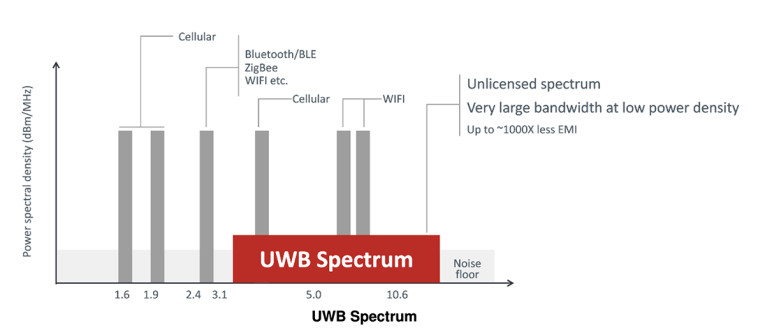
Audio Over UWB
SPARK Microsystems is the company that believes in UWB for short range audio applications, since the technology enables 10X more data throughput than Bluetooth. And the reasons are very well detailed in the website and documentation that SPARK Microsystems has already made available.
"When Bluetooth was developed in the late 1990’s, nobody could have imagined how far wireless technology would evolve in the following decades. As we enter the 2020’s, legacy wireless protocols are being stretched beyond their limits in an attempt to squeeze out just a bit more battery life or just a bit more bandwidth or shortened latency. But narrowband RF can only be pushed so far: most of these approaches compromise quality and latency. A new approach is necessary," the company states.
"For instance, WiFi has issues with high power, high latency, narrow band interference, and quality of service. BLE has limited bandwidth which makes uncompressed audio or HD audio impossible. BLE is also prone to latency and quality of service issues," they add.

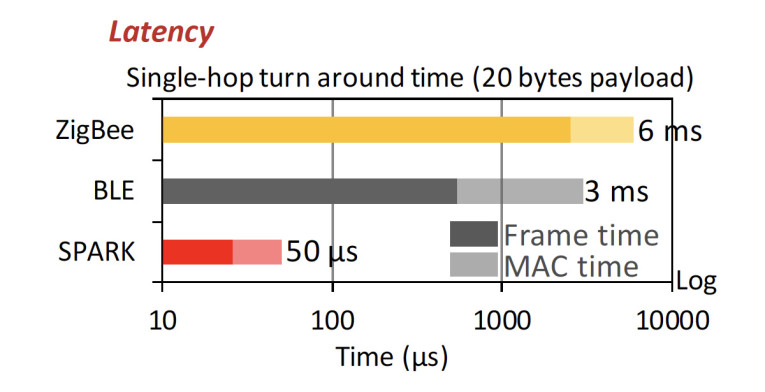
SPARK Microsystems offers a unique Personal Area Network (PAN) wireless transceiver technology that achieves 40x more energy efficiency, 60x lower latency, and 10x more data throughput as compared to Bluetooth LE. In addition, the patented SPARK UWB radio does not interfere with other narrow band radios such as WiFi, BLE, Zigbee, Z-Wave and cellular bands. The current SPARK SR1000 UWB IC family takes full advantage of UWB technology to simultaneously deliver industry-leading energy efficiency, latency and bandwidth, with tested data rates of up to 10Mbps @1.5 nJ/bit energy efficiency, 2mW power consumption while transmitting and receiving 1Mbps (scaling to 6uW at 1kbps), ultra-short wireless latency (50µs for 1kb), and time-of-flight positioning at 30cm accuracy.
The SPARK SR1000 family consists of two IC products, the SR1010 for the 3.1 – 6GHz band, and the SR1020 for 6 – 9.25GHz band. SPARK also developed a complete evaluation solution based on its new SPARK Radio, handling 10Mbps for uncompressed, high-quality audio, and even multichannel streaming. The SPARK Radio achieves a 5ms overall audio latency for uncompressed CD quality audio, taking advantage of ultra fast re-transmission (1000 bit packet in 50 us) and ensuring uninterrupted service.
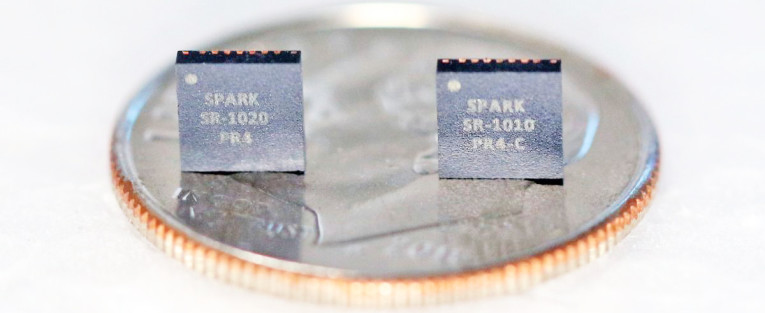
In addition, the SPARK Radio uses an ultra low emission UWB spectrum from 3-10 GHz that does not interfere with any of the other narrow band standards such as BLE, Bluetooth, and WiFi. Cost is also a strong consideration. The SPARK Radio is a fully integrated radio and low-cost, while enabling significant advantages in power consumption, speed, bandwidth, latency and non-interference.
The SPARK Radio can support device-to-device, star, and mesh network configurations. These features allow for increased connectivity and reliability, as well as better coverage of large areas. And SPARK Radio can multiplex several users/devices in the same space (audio channels, controllers, keyboard, mouse, etc).
The new Spark Audio Demo Kit is available now, powered by an ARM Cortex-M4 MCU, with an expansion header for custom applications such as sensors, controllers, keyboard, or mouse, and featuring a USB interface and built in audio I/O for audio streaming. It supports transmission of uncompressed audio in a range of up to 50 meters, with a short latency of 5ms. The included point to point firmware also provides link quality statistics.
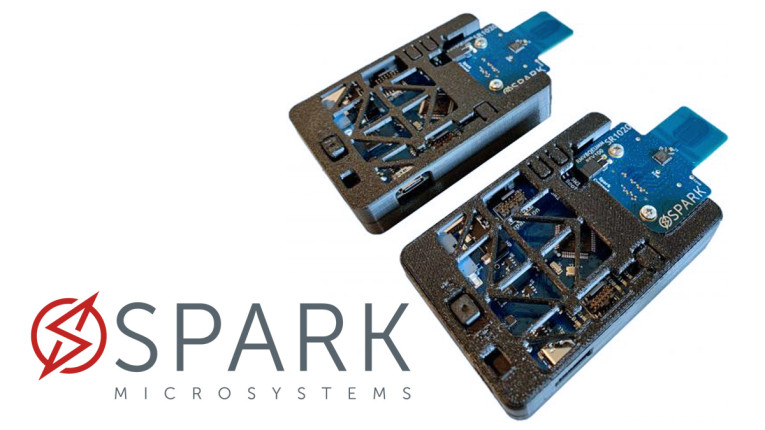
SPARK UWB SDK
The Canadian company also offers a Software Development Kit (SDK) for its SR1000 Series UWB transceivers, which can be used to simplify and accelerate development of high data rate, low power, and low latency UWB communication links for various applications. This software development kit uses SPARK’s Evaluation Kit (EVK) board as a reference hardware platform for code development and debugging.
The SPARK Software Development Kit includes a comprehensive set of Application Programming Interfaces to facilitate development of various software applications without requiring direct access and control of the UWB transceiver. Combined with various example application code included in the SDK, this enables more efficient development of new products using SPARK UWB communication technology.
“Release of the SPARK SDK 1.0 represents another milestone in our effort to proliferate our products using the unique SPARK UWB technology and support fast time to market for a wide range of customer applications,” says Frederic Nabki, Co-Founder and CTO, SPARK Microsystems.
The SDK provides multiple simple and concise application examples to educate developers on using SPARK core libraries, such as the SPARK Wireless Core and the SPARK Audio Core, which bring additional functionality and accelerate development time. It also provides a board support package (BSP) that will enable developers to try the application examples on an already supported and tested hardware platform.
www.uwballiance.org
www.sparkmicro.com
